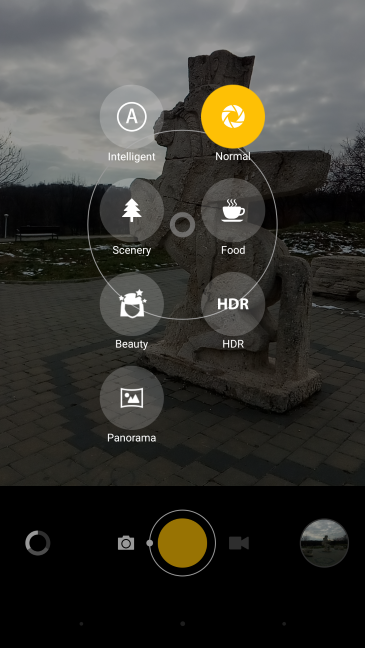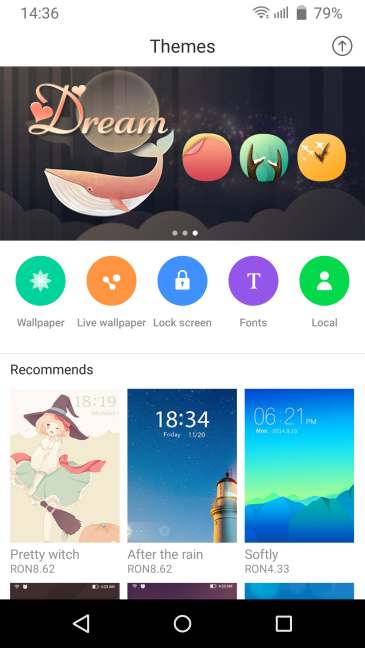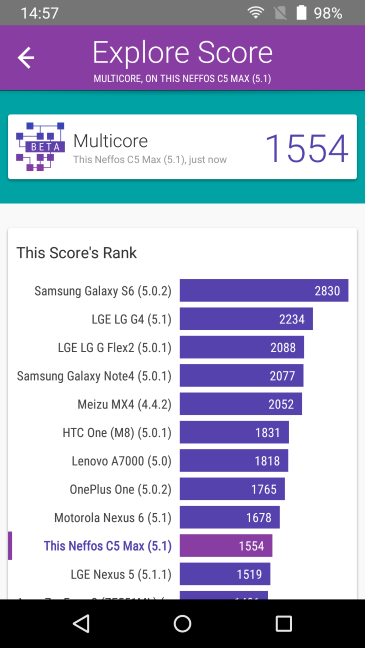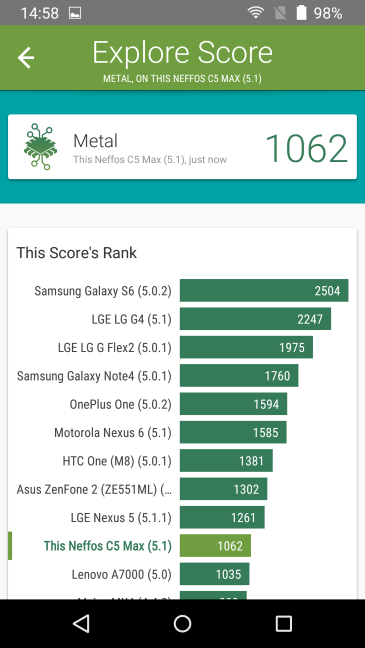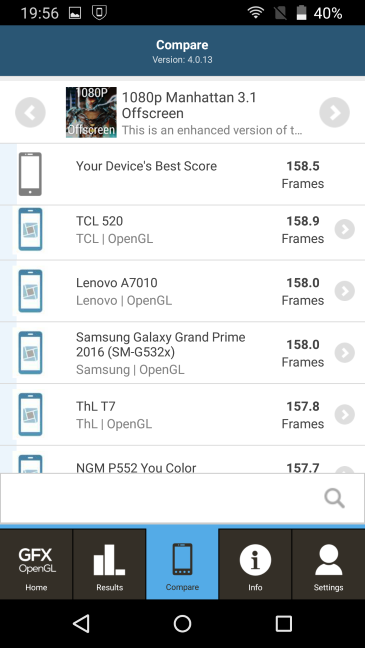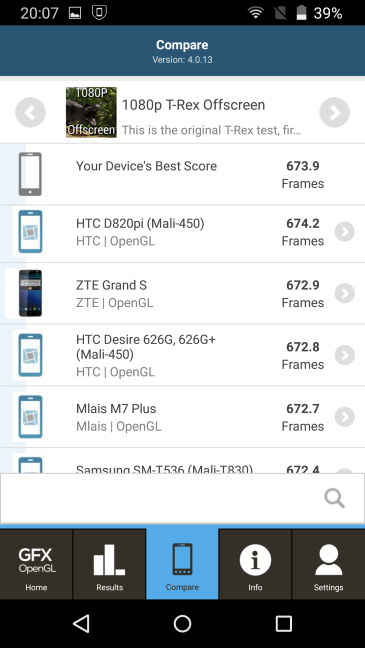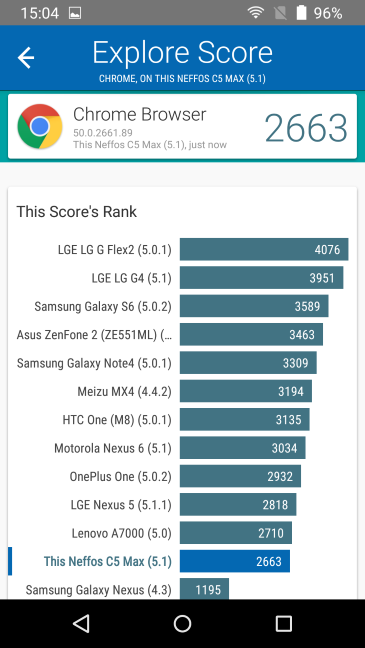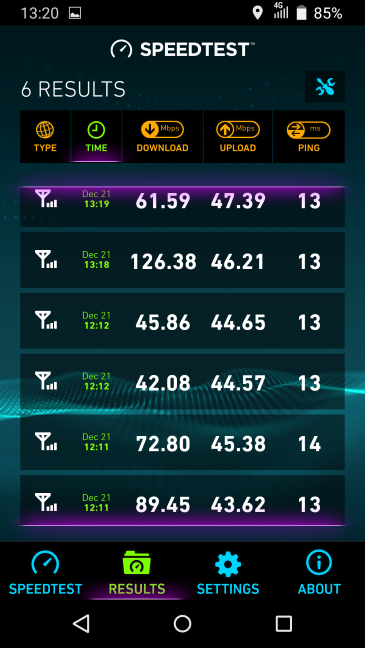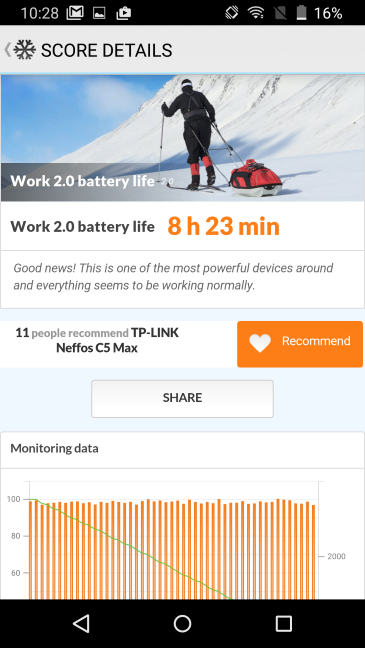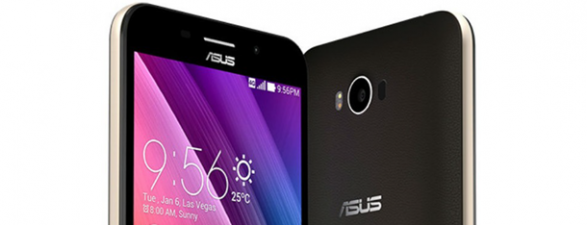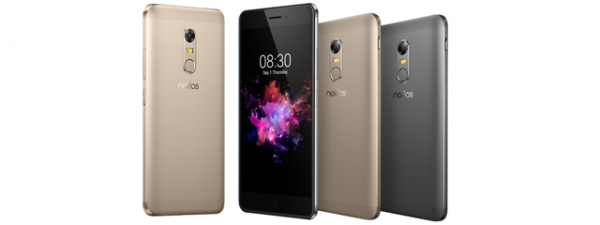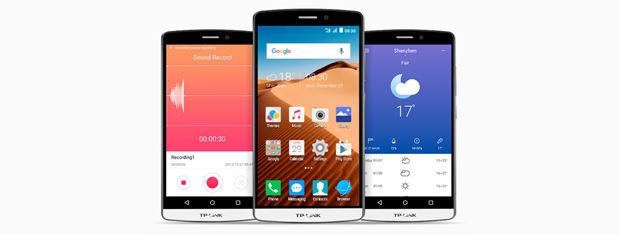
The camera experience on the TP-LINK Neffos C5 Max
Unfortunately, the camera experience offered by TP-LINK Neffos C5 Max is a weak spot of this smartphone. First of all, the Camera app is very basic and rather dated. You do get several filters, a couple of shooting modes and some editing options but other smartphones offers more modern apps with more configuration options.
The quality of the pictures is average at best and pictures tend to be blurry and the contrast is low. Also, in days with little sunlight and especially during night shots, the colors look pale and washed out. You can also see noise in low-light scenes and contours are blurry. The front camera for selfies is even worse and you will have to work a lot harder in order to obtain good quality shots. To get a clear perspective of the results you get with the two cameras on the TP-LINK Neffos C5 Max, browse the gallery below. The selfies you see are made with the front camera.
When shooting video, the rear camera lacks auto stabilization features and this shows in all the videos you record. Also, in some of the shots we recorded we noticed a strange bug with the dynamic range of the colors. They are changing drastically when the phone is moved. The video below demonstrates this issue very well.
Another issue is that moving objects lose their focus while shooting and regain it again seconds later. Here's another video with several moving objects being the focus of the recording.
We are not pleased with the camera experience offered by TP-LINK Neffos C5 Max. It has many bugs and issues. Many smartphones with similar prices canoffera better camera experience.
Android 5.1 Lollipop and bundled apps
Unfortunately, TP-LINK Neffos C5 Max comes with the dated Android 5.1 Lollipop distribution installed. Most probably, this phone will not get Android version 6, not to mention 7, and it will be stuck with this old distribution. However, the good news is that the operating system doesn't have much in terms of bloatware. The apps that are installed by the manufacturer are not many and most of them are useful, even though many of them are very basic. On our test device, we found the following apps alongside the standard apps that come with Android:
- Compass - useful if you need to know where North is, or other cardinal directions.
- Flashlight - your average flashlight app that's useful when you need some light from your phone.
- FM Radio - a small radio player that can use your headphones as an antenna for the radio signal.
- Gallery - a basic clone of Google Photos that displays the pictures that are stored on your smartphone. It can also be used to make basic enhancements to your pictures.
- Mirror - this app works as a mirror by using the front camera on your smartphone.
- Music - a basic music player that can play locally stored songs
- Feedback - this app allows you to give feedback to TP-LINK about your smartphone. You can also report system issues and attach system logs.
- Photo Editor - a basic picture editor which you can use to enhance your pictures.
- Sound Record - your average sound recorder.
- System Update - you can use this app to check for updates for your phone and install them when available.
- System Management - a basic system management app that allows you to analyze and remove installed apps, save some storage space, enable battery saving features, as well as data saving features. The downside for this app is that it has very low ratings on Google Play and many negative reviews from frustrated users.
- Video player - a very basic app that you can use to view the videos that you record with your smartphone.
- Themes - a collection of both paid and free themes for your smartphone that you can quickly download and apply.
Another important aspect to mention is that, while TP-LINK leaves most of the standard Android user interface unchanged, it did remove the app drawer. This means that you can view and access your apps only by swiping between the different home screens.
It's good to see that TP-LINK did not choose to bundles lots of bloatware. However, it should invest in providing an update to Android 6 Marshmallow.
Performance in benchmarks
To put some hard numbers between our impressions and to be able to compare it with other smartphones in terms of performance, we ran several benchmarks on the TP-LINK Neffos C5 Max.
The first benchmark we ran was Vellamo Multicore, a series of tests designed to measure the processor performance when running multiple tasks at the same time. We got a good score of 1554 points, which is close to what you get from LG Nexus 5 and ASUS ZenFone Max.
Next, we checked how it fares in single core operations. We used Vellamo Metal, a benchmark that runs a series of tests designed to measure the performance offered by the processor when only one of its cores is used. There are many apps in the Play Store that still don't know how to use more than one core at a time, so this test is quite important. TP-LINK Neffos C5 Max managed to score 1062 points, which places it somewhere between LG Nexus 5 and ASUS ZenFone Max.
Then we moved on to the gaming tests. After all, many people use smartphones for gaming too. To measure the performance offered in games, we used the Manhattan and T-Rex tests offered by the GFXBench GL Benchmark app. We usually take into consideration only the 1080p Offscreen versions of these tests because they are run at the same resolution on any device, regardless of their native display resolutions. This makes more sense when you compare the results you get with those from other devices. In the Manhattan Offscreen test, the TP-LINK Neffos C5 Max rendered only 158.5 frames, which is a very low score.
The next gaming test, the T-Rex Offscreen, ended with another poor result: this smartphone managed to render 673.9 frames. The results in the GFXBench GL Benchmark prove that TP-LINK Neffos C5 Max is not a smartphone for gamers.
Going further, we wanted to see how well it fares in a more mundane activity: browsing the web. We turned to Vellamo again and we ran its Browser tests. This test measures the performance offered by the device when rendering websites coded with HTML5 and CSS3, as well as when running all kinds of scripts. TP-LINK Neffos C5 Max got 2663 points in Google Chrome, which is good score which places it again, somewhere between LG Nexus 5 and ASUS ZenFone Max.
TP-LINK Neffos C5 Max offers 4G LTE data connections and we wanted to measure how fast it is, in an area with very good network coverage. The cellular network we used is Vodafone Romania. In the screenshot below you can see the results we obtained with SpeedTest - an app that tells you how fast your internet connection is. While we received some great results, they varied a lot more than with other smartphones. For example, we obtained a download speed anywhere between 42.08 Mbps to 126.38 Mbps. We do see variations with other smartphones too but not this high. Luckily, the upload speed was rather constant and it got close to the maximum we've ever received in the same area of 50 Mbps.
Lastly, we ran the battery test. The Work battery life series of tests from the PCMark app ended with a battery life of 8 hours and 23 minutes, which is a solid score. It confirms that this smartphone should not have any issues lasting at least a day of use.
Our benchmark results show that TP-LINK Neffos C5 Max is a mid-range smartphone with mid-range performance. Also, it's definitely not a smartphone for gamers but for casual usersthatneed an affordable smartphone with decent performance levels.
Pros and cons
Here are the positives that we identified about the TP-LINK Neffos C5 Max:
- It's affordably priced
- The outdoors visibility of the screen is better than what you would expect
- There's little bloatware on this smartphone
- It's a Dual SIM smartphone that has a separate microSD card alongside the two SIM slots
- The autonomy is good for a smartphone in its price range
There are also some important negatives to consider:
- The camera is below what competitors have to offer in the same price range
- It uses Android 5.1 Lollipop instead of Android 6 Marshmallow
- It's good for the usual smartphone apps but not for gaming
- Its bundled apps are very basic and you are better served by other apps from the Google Play Store
Verdict
TP-LINK Neffos C5 Max is a decent smartphone with reasonable specifications and hardware that is good enough for the smartphone user who is looking for a device with an affordable price. Yes, it has several positives, like the good outdoors visibility of the screen, the little bloatware that it has installed or the fact that it has a microSD card alongside two SIM cards, which isn't something you see often on Dual SIM smartphones. However, it's also a very boring device, with dated software, that doesn't stand out from other smartphones with similar prices. It's affordable, it does the job it is supposed to do and that's it!


 27.01.2017
27.01.2017 